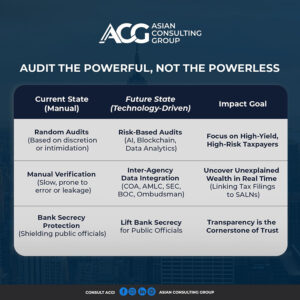Japanese executives are sitting on a potential liquidity source worth hundreds of billions of dollars at precisely the moment when traditional financing channels are tightening.
One study found that direct ownership in listed firms averages approximately 4% across the market, which would represent substantial total equity in companies capitalized at a total of $6.3 trillion as of February 2025.
Yet these shareholdings remain largely locked up, even as borrowing costs climb and export revenues weaken.
“We’re seeing a fundamental repricing of capital access in Japan,” said Al Christy Jr., founder and CEO of EquitiesFirst, an alternative financing firm that specializes in equities-backed financing. “The transitions from deflation to inflation, from negative rates to positive rates—these can force a complete reassessment of corporate finance strategies.”
The Bank of Japan’s policy normalization, combined with mounting trade pressures, has created conditions where alternative financing structures may gain traction. EquitiesFirst provides financing secured by equity positions, a structure that may gain relevance as traditional lending tightens.
The End of Free Money
After decades of deflation and negative rates, Japan has entered an environment where borrowing carries meaningful cost. The Bank of Japan exited negative territory in 2024 and raised its benchmark to 0.5% earlier this year. Former central bank executive Eiji Maeda expects another increase to 0.75% by year-end or early 2026, with the rate potentially reaching 1% by summer.
“Japan is transitioning from a zero-cost capital environment to one where money has a price again,” said Christy Jr. “That changes calculations about leverage about when to borrow.”
Firms may increasingly carry substantial debt loads that will cost more to service and refinance. Bank lending remains available but more conservative, particularly for small and mid-sized firms.
Private credit markets have expanded to fill gaps, with Japan-based investors allocating to alternatives including private credit increasing by over 50% in the five-year period ending 2024.
Export Headwinds Compound Funding Pressures
Japan’s export sector is confronting its most difficult environment in years, creating additional strain on corporate balance sheets. U.S. tariffs imposed at 25% on automobiles and auto parts in April hit major manufacturers hard. Exports to America, Japan’s largest market, declined 10.1% year-over-year in July despite some companies absorbing costs through price cuts.
A July trade agreement reduced tariff rates to 15%, but the burden remains substantially above the 2.5% pre-2025 baseline. Automotive OEMs like Toyota and Nissan have seen margins compress as they balance volume preservation against profitability. Beyond autos,
At the same time, machinery and semiconductor equipment makers face intensifying competition from Korean and Chinese producers.
Japan’s overall manufacturing activity has contracted for six consecutive months through September, with the purchasing managers’ index hitting 48.4—its lowest reading in half a year. Factory output declined, new orders fell to five-month lows, and export orders weakened.
“The tariff situation has created a double bind,” said Christy Jr. “Companies need capital to adjust supply chains and potentially relocate production, but their ability to service debt has been compromised by margin compression.”
Banks have grown more conservative in underwriting sectors with direct tariff exposure. This creates a gap that alternative financing mechanisms can address, particularly for executives and families controlling equity positions in affected companies.
For founding families common in Japan’s industrial base, selling shares to raise cash creates unwanted dilution and may signal distress.
Director ownership adds another dimension. The 4% average director ownership across a $6.3 trillion market would represent over $250 billion in potential equity value that could be mobilized through appropriate structures.
“Japanese business culture has always valued long-term relationships and stable ownership,” Christy says. “The challenge now is maintaining that stability while adapting to an environment where capital costs money and revenue growth faces headwinds. Equity-backed financing threads that needle.”
As monetary policy normalization continues and trade pressures persist, companies with substantial equity holdings may increasingly turn to firms like EquitiesFirst as they view these assets as sources of financing flexibility.


















